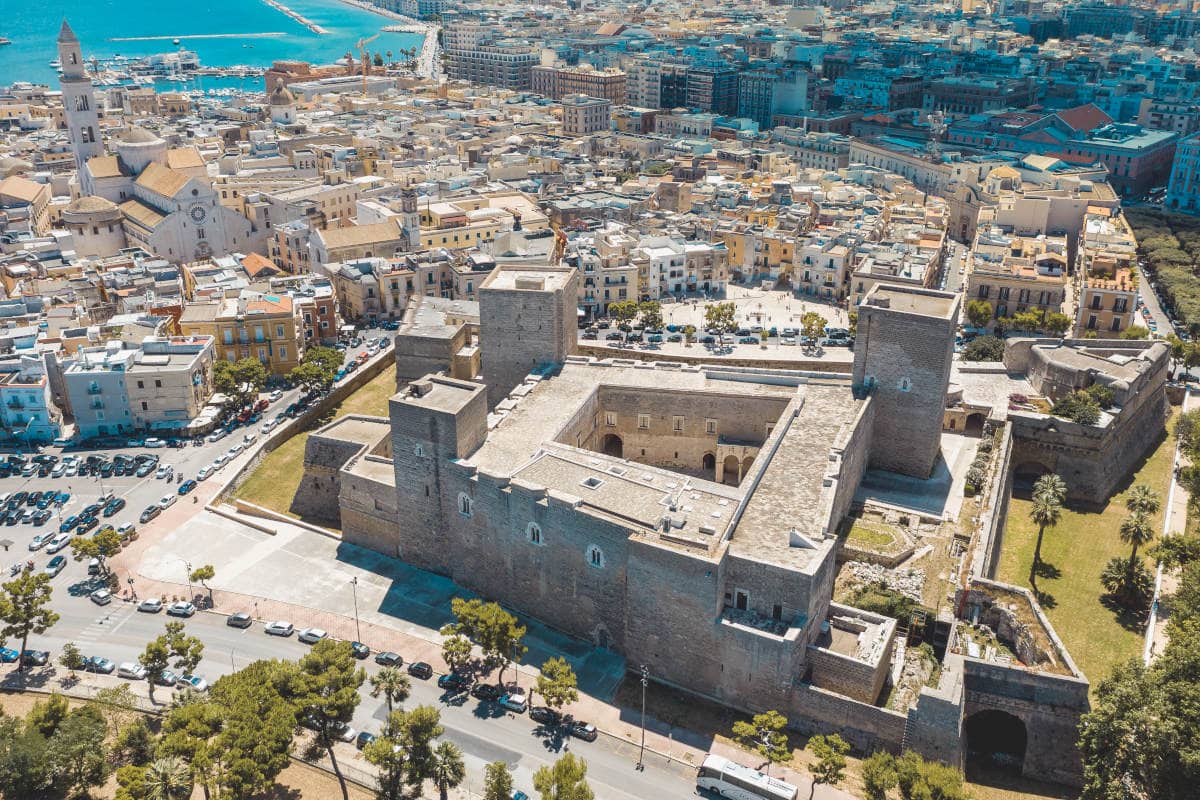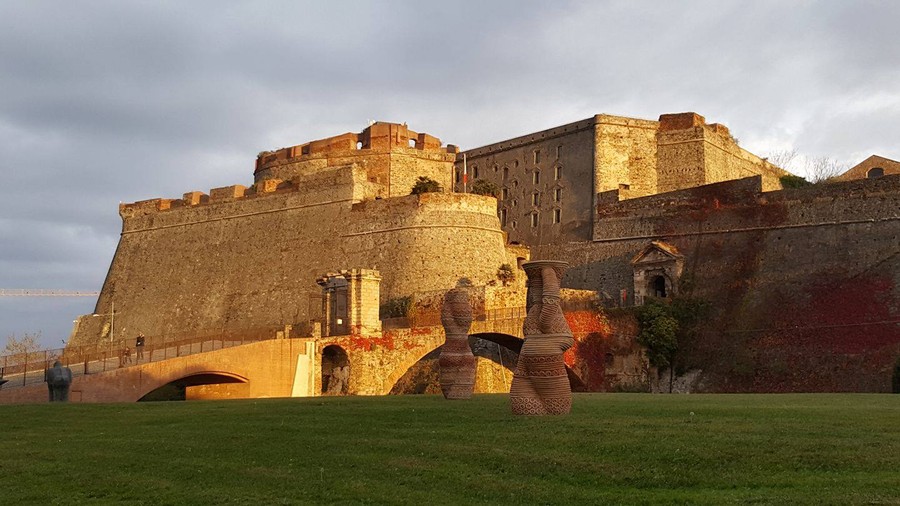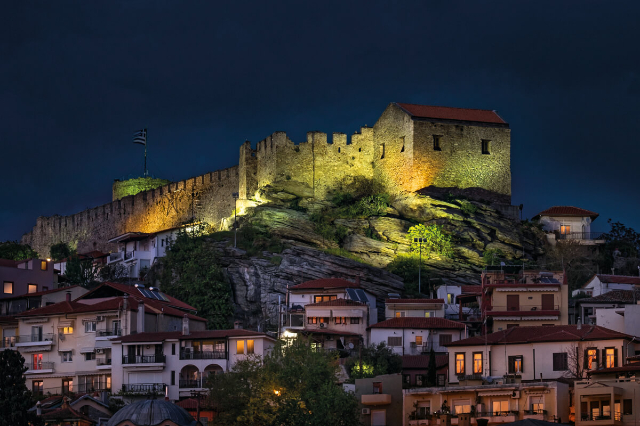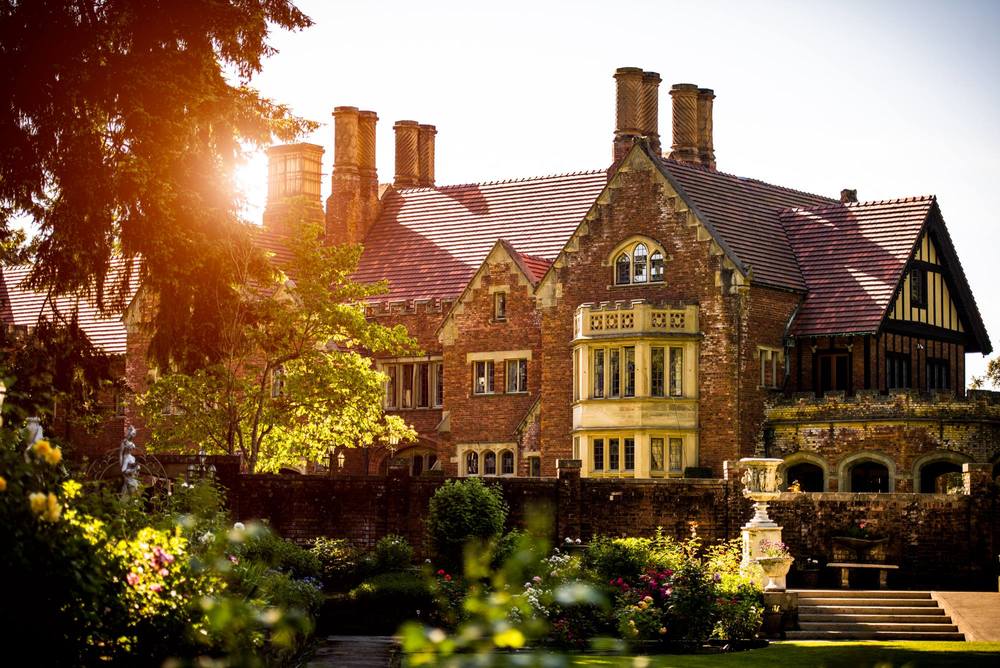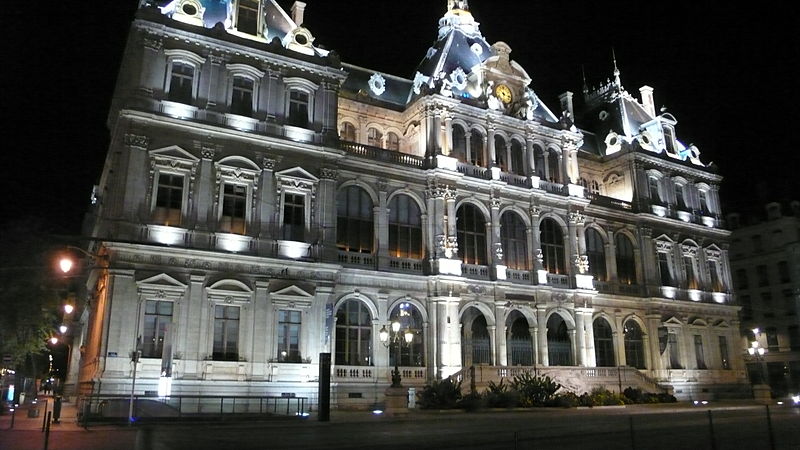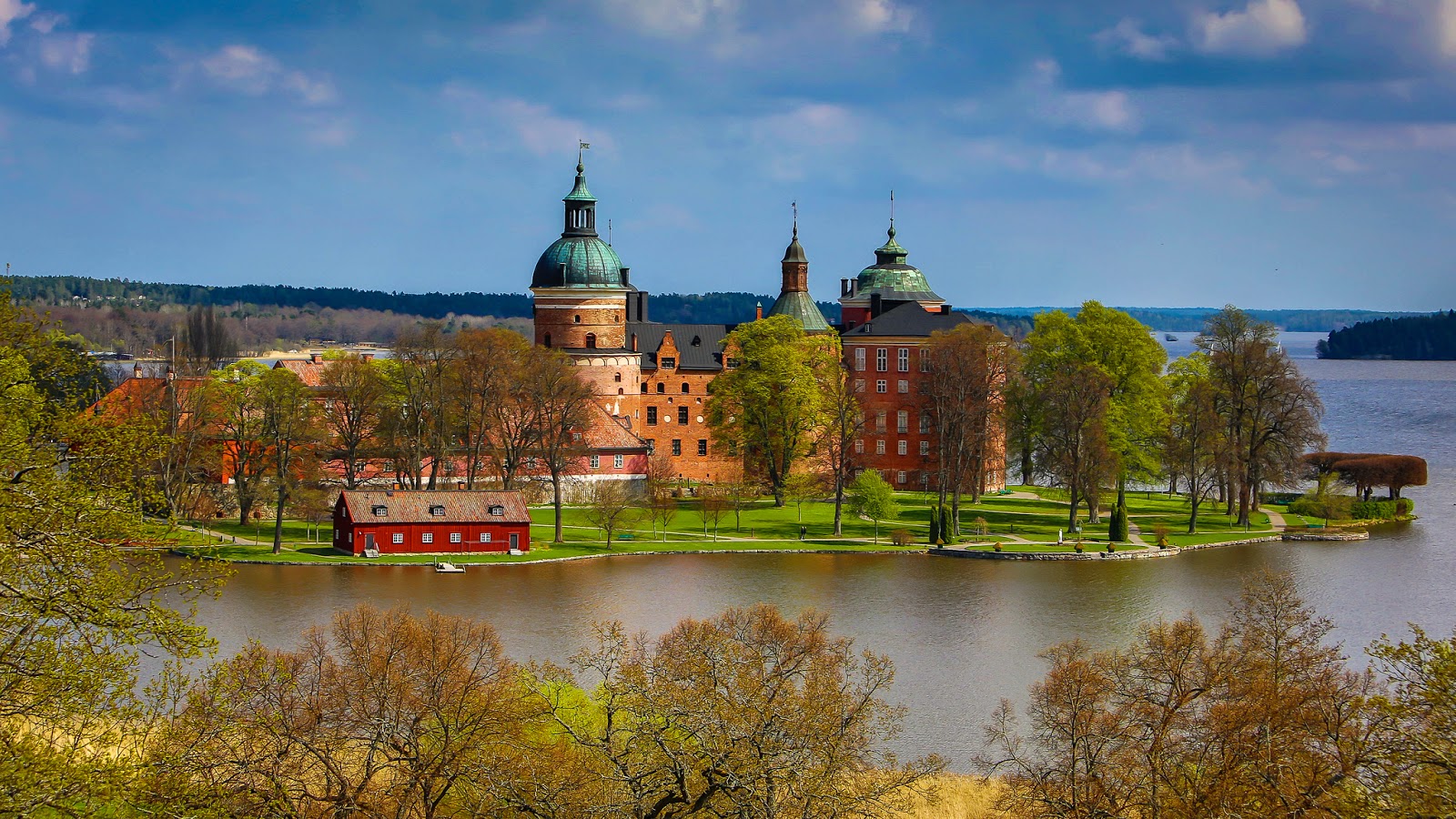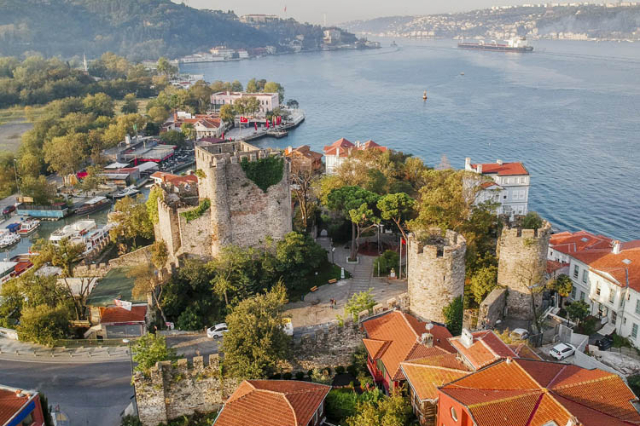The Swabian Castle of Bari is an imposing fortress dating back to the thirteenth century, now used as a museum. Located on the edge of the old town, near the port area and the Cathedral, with its bulk is one of the most important and famous monuments of the city.
Historically attributed to the Norman king Roger II, the Castle was built in 1131 on pre-existing Byzantine housing structures and, after the hard work of William I the Bad, was recovered by Frederick II of Swabia between 1233 and 1240. In the second half of the 13th century, Charles of Anjou carried out a restoration programme aimed at reinforcing the north wing of the Castle, which at the time was directly lapped by the sea. The Norman-Swabian nucleus has a trapezoidal plan, with a central courtyard and three high, rusticated corner towers. Going past the south-western tower, known as the tower of the Minorites for having housed the prison section in the 19th century, you come to the original entrance, the Frederick portal leading into the central courtyard. Today three halls and a small chapel with classical forms overlook it.
In the 16th century, Isabella D’Aragona and her daughter Bona Sforza radically transformed the Castle, adapting it to the development of heavy artillery with the construction of a mighty walled enclosure around the Swabian Norman nucleus, while at the same time softening the interior of the complex. In this phase the interior of the Castle takes on the appearance of a Renaissance residence, with an elegant and scenic double flight of stairs connecting the ground floor to the large halls of the main floor. In the following centuries, particularly during the Bourbon domination, the Castle was substantially abandoned, becoming first a prison and then a barracks. Only in 1937 did it become the seat of the Superintendence of Monuments and Fine Arts of Puglia and Basilicata.
In 2017, following restoration and musealization works, the offices of the Superintendence are transferred and the Castle is fully returned to public use.
In the rooms of the west wing on the ground floor of the Castle there is the Gipsoteca, a collection of plaster reproductions of the sculptural apparatus of the most important monuments and cathedrals of Puglia made in 1911 by sculptors Pasquale Duretti and Mario Sabatelli on the occasion of the Regional Ethnographic Exhibition for the Fiftieth Anniversary of the Unification of Italy. Also on the ground floor it is possible to visit two small archaeological excavation areas, where pre-existing structures from the Byzantine era are visible.
Recent restoration work, completed in October 2017, has made it possible to reopen to the public the entire main floor of the Castle, whose spaces are now used to host temporary exhibitions and cultural events.
